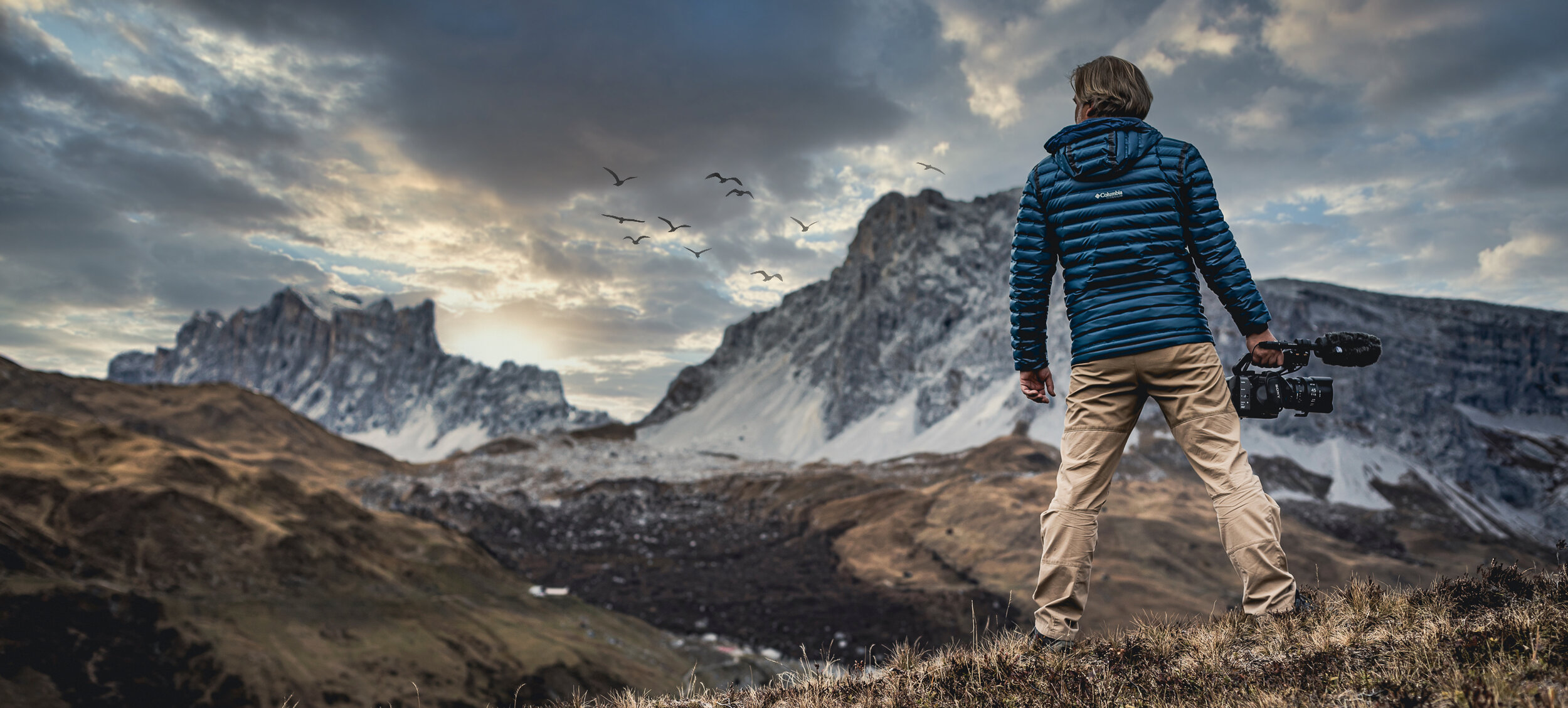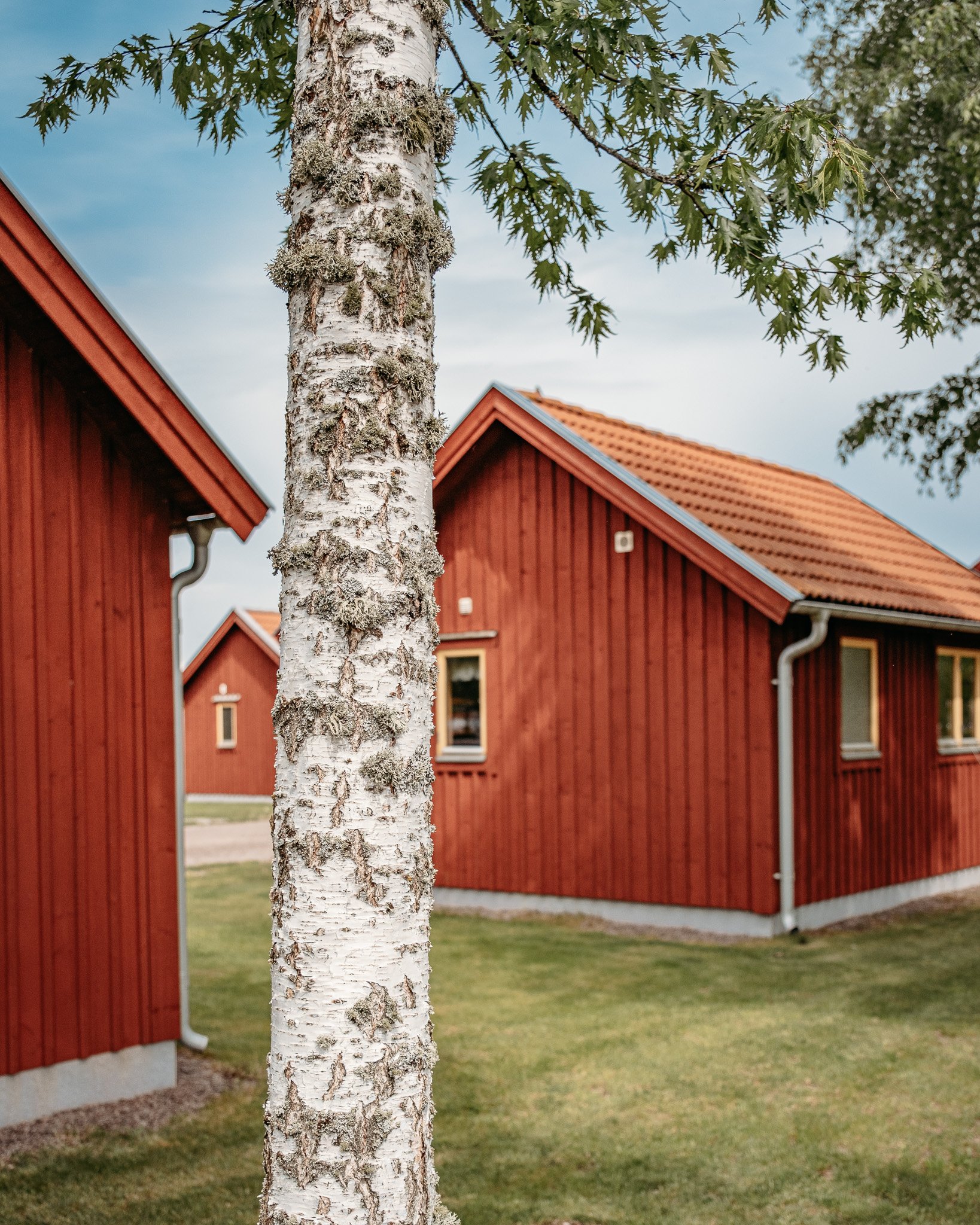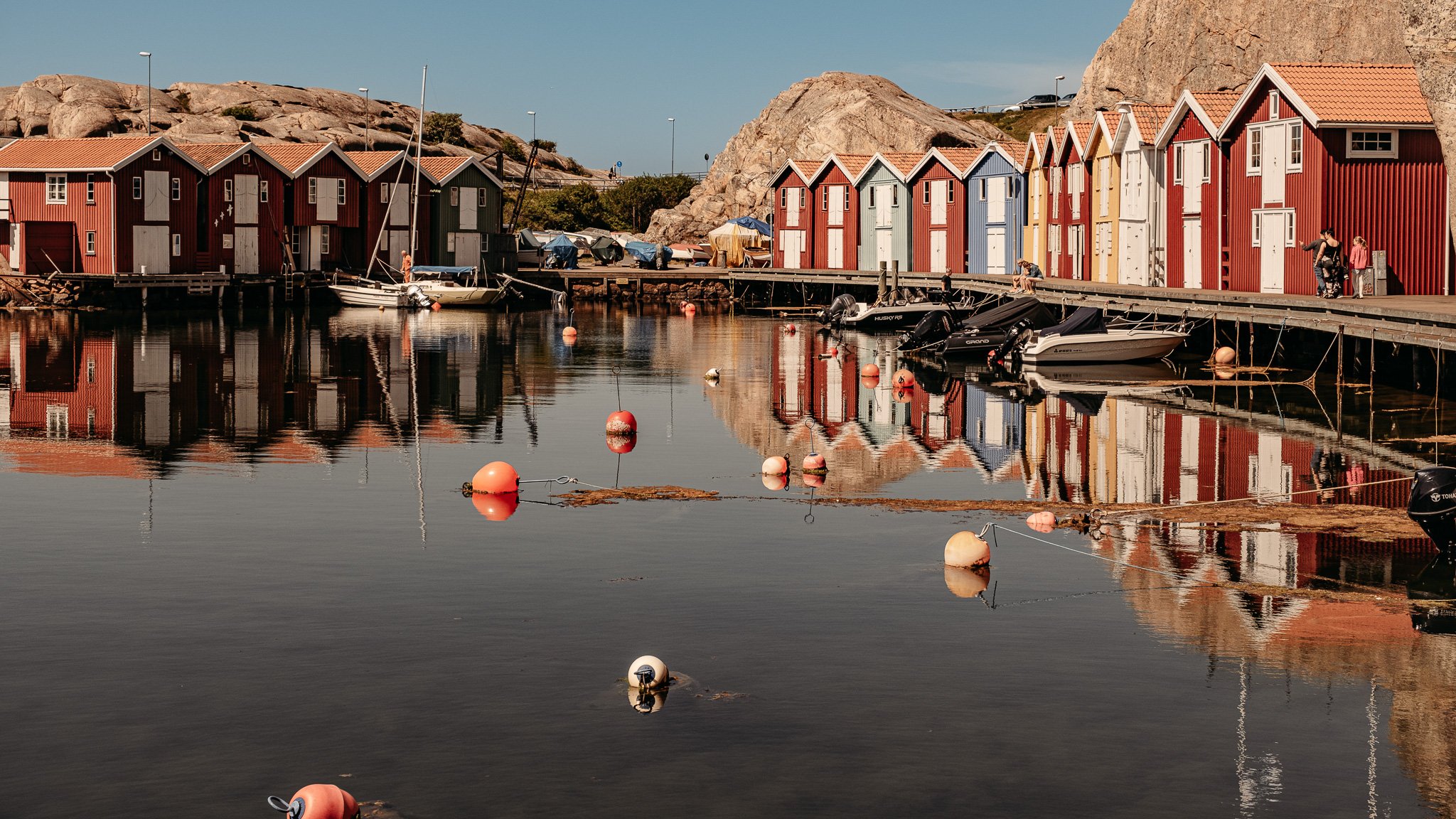
Blog

Göta Canal - Sweden's Blue Ribbon
The Göta Canal is often referred to as Sweden's blue ribbon. The 19th century canal connects Lake Vänern in western Sweden with Lake Vättern and ends - or begins, depending on how you look at it - on the east coast.

Why are the houses in Sweden red?
Nothing is more typical of Sweden than red houses. But how did it actually come about?
When you think of Astrid Lindgren's stories, the typical red country houses immediately come to mind. Whether in Bullerbü or Lönneberga, or even her birthplace in Vimmerby, the red houses run like a literal red thread through Astrid Lindgren's novels.

Fields of rape and the endless blue sky
The typical yellow landscape comes from the huge production of rapeseed oil.

Lake Vänern - the charm of sweden starts here
Bike tour along Lake Vänern to Spiken and Läckö Strand near Läckö Slott. The charm of sweden starts here!

Fjällbacka - Ingrid Bergman's place of longing
A strip of land on Sweden's western coast called Bohuslän welcomes its visitors with windy gusts, small harbors, picturesque towns, many white houses and the archipelago known for Scandinavia.

Smögen! Hip or Hype?
Blue water, archipelagos, rocking boats, colorful wooden houses and Sweden's longest wooden pier - Smögen in the western Swedish province of Västra Götalands län is one of the country's tourist highlights.

Grömitz - Strandkörbe satt an der Ostsee
Grömitz gehört zu den größten Ostseebädern und liegt am Nordstrand der Lübecker Bucht in Schleswig-Holstein an der Deutschen Ostsee.

Kinkaku-Ji - Der goldene Pavillon
Der Kinkakuji (金閣寺, Goldener Pavillon) ist ein Zen-Tempel im Norden Kyotos, dessen oberste zwei Stockwerke vollständig mit Blattgold bedeckt sind. Der ursprünglich als Rokuonji bekannte Tempel war die Ruhestandsvilla des Shoguns Ashikaga Yoshimitsu und wurde nach seinem Tod im Jahr 1408 gemäß seinem Testament zu einem Zen-Tempel der Rinzai-Sekte. Der Kinkakuji stand Pate für den ähnlich benannten Ginkakuji (Silberner Pavillon), den Yoshimitsus Enkel, Ashikaga Yoshimasa, einige Jahrzehnte später auf der anderen Seite der Stadt erbaute.

Der Ryoanji Temple - Der berühmteste Steingarten Japans
Der Ryoanji-Tempel (龍安寺, Ryōanji) in Kyoto ist der berühmteste Steingarten Japans. Ursprünglich eine Adelsvilla aus der Heian-Zeit, wurde die Anlage 1450 in einen Zen-Tempel umgewandelt und gehört zur Myoshinji-Schule der Rinzai-Sekte des Zen-Buddhismus, deren Haupttempel nur einen Kilometer weiter südlich steht.

Shirakawa-gō - Das Ballenberg von Japan
Shirakawa ist ein Dorf in den Japanischen Alpen im Bezirk Ōno, Präfektur Gifu, Japan. Es ist vor allem als Standort von Shirakawa-gō bekannt, einem kleinen, traditionellen Dorf, das einen Baustil präsentiert, der als Gasshō-zukuri bekannt ist. Zusammen mit Gokayama in Nanto, Toyama, ist es eine der UNESCO-Welterbestätten.

Tokyo - Die stille Megacity
Tokyo mit 14 Millionen Einwohner und ruhig - Ein Widerspruch? Nein - man hört z.B. kein Hupen von Autos - dies ist nicht in der DNA der Japaner! In den japanischen Autos wurden scheinbar Hupen nur für Europäer eingebaut, für die Giovannis und Luigis dieser Welt…;-).

Fujisan - Eine japanische Ikone
Der Berg erhebt sich mit seinen 3776 Metern etwa 100 km südwestlich von Tokyo und ist in der ganzen Welt als ein Symbol des Landes bekannt. Obwohl er das letzte Mal 1707 ausgebrochen ist, wird er immer noch zu den aktiven Vulkanen Japans gezählt.

Wintertime in the Sertig Valley
Not only the little church and the magnificent Walser houses attract visitors. The Sertig, near Davos, is considered a region in Switzerland particularly worthy of protection. Dense pine and larch forests stretch up the mountain flanks, in spring the meadows around the village turn into a sea of white crocuses and at the back of the valley a waterfall thunders into the depths.

Winter hike from Klosters to Alp Garfiun
Winter hike from the old Walser village of Monbiel to the quiet Alp Garfiun with its cosy mountain inn - an oasis of peace. Continue through the enchanted winter landscape along the Lanquart river to Klosters Platz.

Norway's Trondheim - more than Bakklandet
The oldest of Norway’s major cities, traces of Trondheim’s rich heritage can be seen all over the city center. While it was founded at the end of the Viking Age, it’s still associated with the Vikings and was the religious center of northern Europe during the Middle Ages.

Dog sledding in Tromsø, Norway
Based just outside Tromsø city and within the Arctic Circle, we had a unforgettable morning at Villmarkssenter on a dog sled pulled by wonderful Alaskan huskies in a fresh snowy area.

Svolvaer - Lofoten
On the lofoten islands there is no sunlight during several months in winter. During a few hours a day only blue hours with pink colors illuminating the snow-white covered mountains - a paradise for photographers. Best time to capture the optimal light is in December around midday.

Norway - Twilight zone (part 1)
Here I write in loose sequence and also not in the correct chronological order about our trip with an expedition ship from Hamburg to the arctic North Cape, along the old postal route of Norway.
